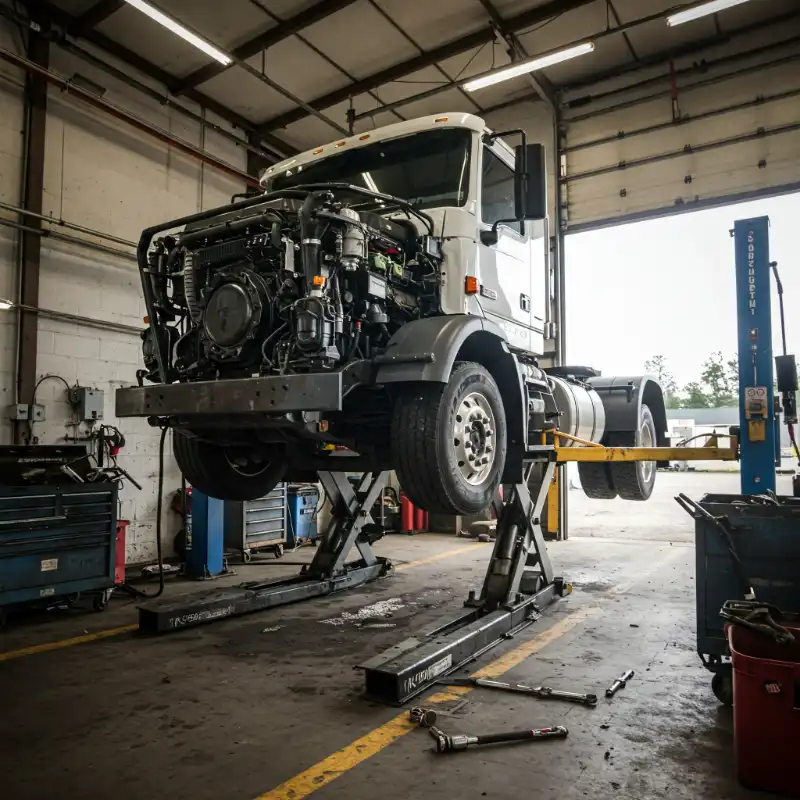Understanding the Importance of Wheel End Seals
In commercial trucks, every component is crucial in ensuring optimal performance and safety. Among these components, wheel end seals stand out, silently guarding against contamination and preserving vital lubrication.
What are Wheel End Seals?
Wheel end seals, often referred to as hub seals or axle seals, are essential components located at the interface between the wheel hub and the axle assembly. These seals serve a critical function by preventing contaminants such as dirt, water, and debris from infiltrating the wheel bearings and other internal components.
Preventing Contamination and Preserving Lubrication
The primary role of wheel end seals is to maintain a clean and lubricated environment within the wheel hub. Contaminants, if allowed to penetrate the wheel bearings, can accelerate wear and tear, leading to premature failure and costly repairs. Additionally, proper lubrication is vital for reducing friction and heat generation within the wheel end assembly, thereby prolonging the lifespan of critical components.
Impact of Failed Wheel End Seals
The repercussions of neglected wheel end seals can be severe, affecting both safety and operational costs. A compromised seal can allow contaminants to infiltrate the wheel bearings, leading to accelerated wear and potential bearing failure. This not only jeopardizes the safety of the vehicle but also results in unplanned downtime and increased maintenance expenses.
Comparative Analysis of Wheel End Seals
Wheel end seals are available in various materials and designs, each offering unique benefits in terms of durability and effectiveness. Common types include:
- Rubber Lip Seals: Known for their flexibility and resilience, rubber lip seals provide excellent durability and resistance to wear and tear. They are suitable for diverse operating conditions and offer ease of maintenance.
- Felt Seals: These traditional seals offer reliable performance and cost-effectiveness. They are adept at preventing contaminants from entering wheel end components and are commonly used in moderate load capacities.
- Advanced Synthetic Seals: Engineered with high-performance materials, advanced synthetic seals offer superior longevity and sealing efficiency. They are ideal for heavy-duty applications and demanding environments.
Best Practices for Wheel End Seal Maintenance
Now that we understand the critical role of wheel end seals, let's explore best practices for ensuring their longevity and optimal performance.
Regular Inspection Schedules and Procedures
- Establish regular inspection schedules to detect early signs of seal wear or damage.
- Conduct visual checks for leaks, abnormal wear patterns, and proper seal seating during inspections.
- Ensure technicians follow prescribed procedures for disassembly and reassembly to maintain seal integrity.
- Regularly review and update inspection protocols to incorporate industry best practices and manufacturer recommendations.
- Utilize specialized tools and equipment for accurate seal inspection and measurement.
- Train maintenance personnel on proper inspection techniques and seal maintenance procedures.
- Implement a tracking system to monitor inspection frequency and seal condition over time.
- Collaborate with suppliers and manufacturers to stay informed about new developments in seal technology and maintenance practices.
- Conduct thorough post-inspection analysis to identify root causes of seal issues and implement corrective actions.
Factors Affecting Seal Lifespan
Several factors can influence the lifespan of wheel end seals, including operating conditions, temperature fluctuations, and load capacity. Mitigating factors such as proper lubrication, adequate sealing surface preparation, and appropriate torque specifications can help extend the seal lifespan and minimize the risk of premature failure.
Proper Cleaning Techniques
Proper cleaning of wheel end assemblies is essential for preventing contamination and prolonging seal life. This includes removing dirt, debris, and old lubricants before reassembly. Use of compatible cleaning agents and non-abrasive tools ensures thorough cleaning without damaging sensitive components.
Selecting the right lubricant is crucial for maintaining optimal performance and extending seal life. Consult manufacturer recommendations for compatible lubricants and application methods. Over or under-lubrication can lead to seal degradation and compromise overall system integrity.
Replacement and Installation Procedures
When replacing worn or damaged wheel end seals, proper installation is paramount to ensure effective sealing and prevent future issues. Follow manufacturer guidelines for seal replacement and use of recommended installation tools. Additionally, verify proper alignment and seating of the seal to prevent leaks and premature wear.
Tips for Maintenance in Extreme Conditions
In extreme operating conditions such as high temperatures or off-road environments, additional precautions may be necessary to maintain seal integrity. This may include more frequent inspections, use of specialized seals or lubricants, and implementation of protective measures such as seal guards or covers.
Integration into Maintenance Plans
Integrating wheel end seal maintenance into broader vehicle maintenance plans promotes consistency and accountability. By establishing clear protocols for seal inspection, lubrication, and replacement, fleet managers can streamline maintenance workflows and proactively prevent costly downtime. This approach ensures optimal vehicle performance and longevity while facilitating adherence to scheduled maintenance intervals, ultimately enhancing fleet efficiency and reducing operational costs over time.
Recap
In conclusion, wheel end seals are integral components in the commercial trucking industry, safeguarding critical wheel end assemblies against contamination and preserving lubrication. By adhering to best practices for wheel maintenance and inspection, fleet managers and truck owner-operators can optimize seal performance, minimize downtime, and reduce operational costs.










.webp)





























